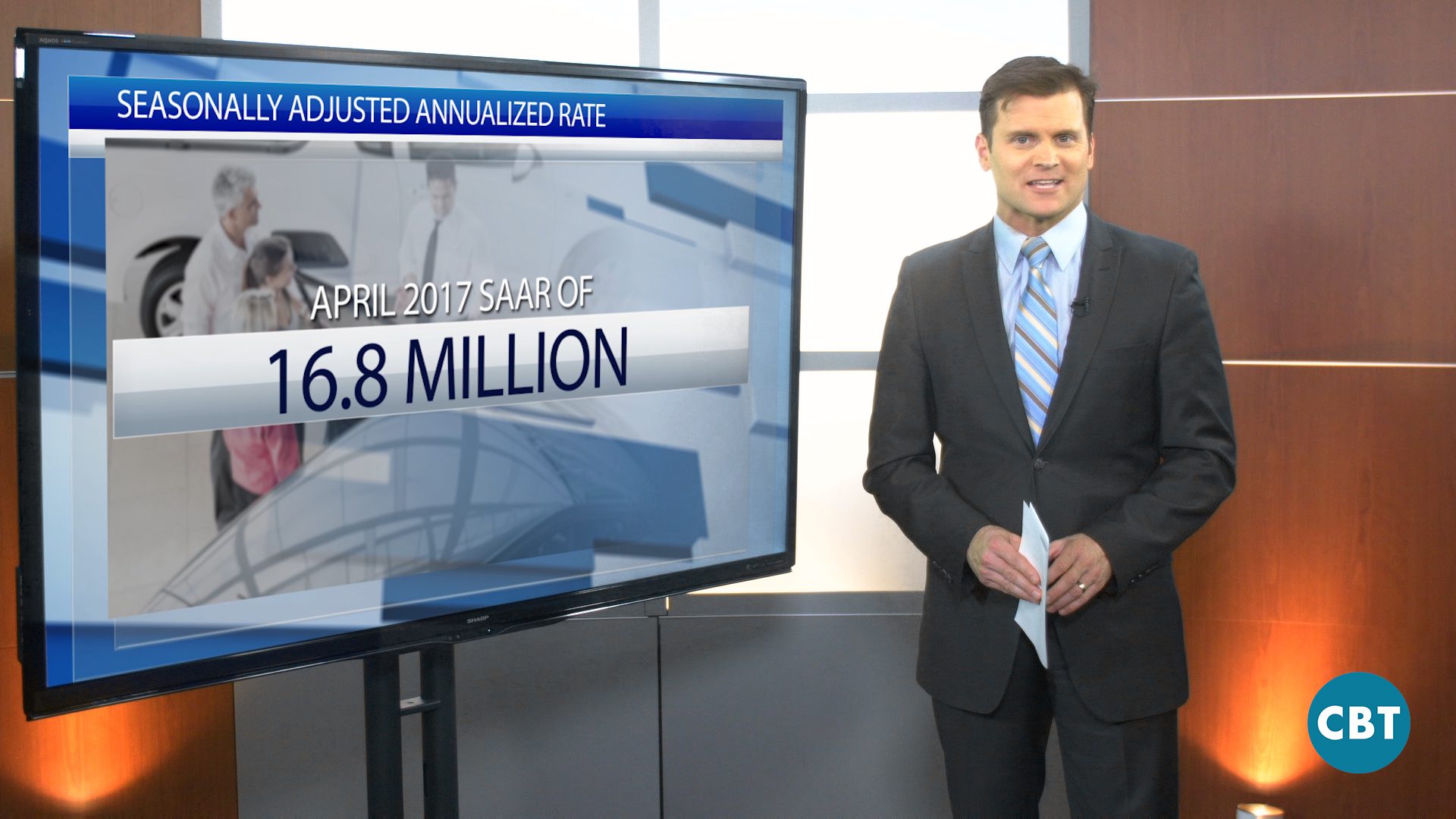CBT News Anchor Joe Gumm reports on U.S. automotive sales totals for the month of April 2017.
The seasonally adjusted, annualized sales rate was 16.8 million. Starting with domestic non-luxury brands for April. Fiat declined 18%. Chrysler dropped 3.3%. Jeep fell 16.5%. While Dodge dropped 2.6% and Ram improved by 5.3%.
Ford’s brand mirrored its March numbers, dropping 7.4%. GMC dipped slightly, 0.3%, as consumers continue to ditch cars in droves amid low gas prices that are making bigger vehicles more enticing. For example, the Chevy Sonic subcompact plunged 67.8% to just 1,645 units. Chevy had a loss, 10.4%, but the brand’s crossovers faired better, including the small Trax crossover, which posted a 44.3% increase to 6,509 units. Buick’s numbers increased 17%, due in large part to the small Encore crossover.
Imports
Starting with Toyota, the brand dropped 2.7%. Mitsubishi fell 13.4%. Nissan had a loss of 2%. Honda fell 6.3% and Kia declined 5.6%. Hyundai’s brand was up 1.3%. VW gained 1.6%. Mazda decreased 7.8% and Subaru increased 3.9%.
Luxury brands
BMW was down 9.3%. Mercedes Benz fell 8.5%. Audi improved 5.1%. Lincoln dipped slightly 0.9%. Lexus fell, 11.1%. Cadillac improved 9.5%. Acura was down 12.8%. Infiniti improved 3.5%. Volvo is up 15.4%. Porsche increased 2.2%. Jaguar with a big increase, 197.1% and Land Rover a slight improvement of 0.4%.
Of April’s numbers, Jessica Caldwell (Senior Analyst and Director of Pricing and Industry Analysis with Edmunds) says, “We’re seeing a dramatic lag in the 2016 model-year selldown. In April, 8 percent of vehicles sold were 2016 models, up from only 3 percent five years ago. Inventory buildup is a top concern of automakers and all eyes are on whether cuts in production are enough to offset expected dips in sales.” She added, “Low interest rates and longer loan terms have helped drive car sales growth over the past few years. But with interest rates rising, car loans are becoming less enticing for consumers, which inevitably creates further drag on new vehicle sales.”








